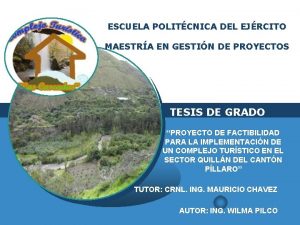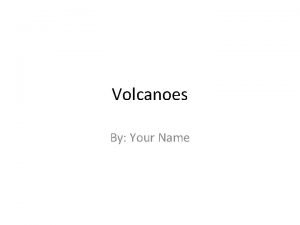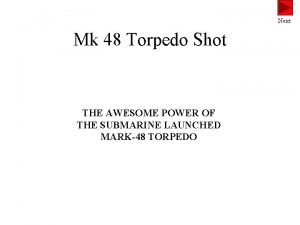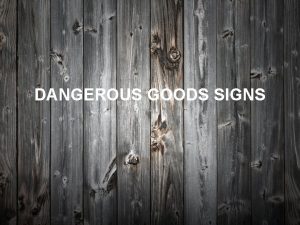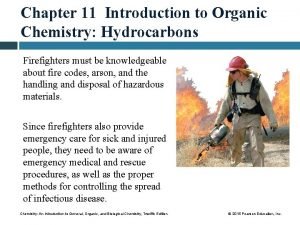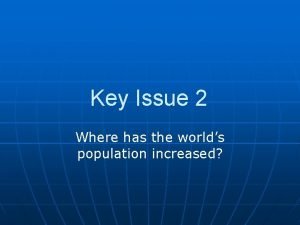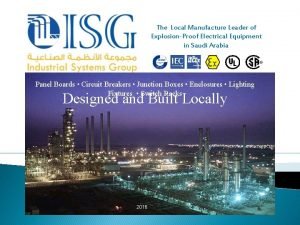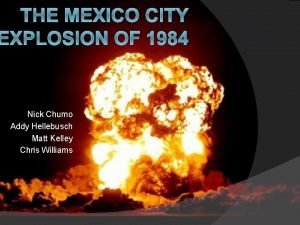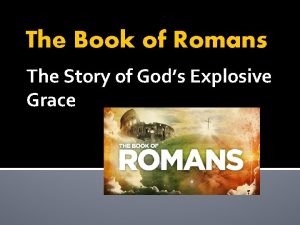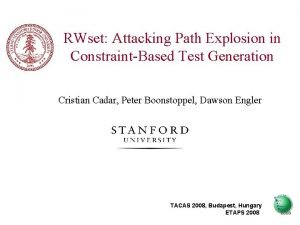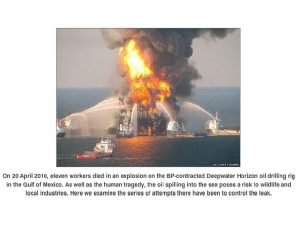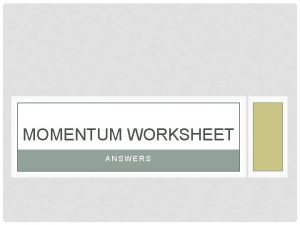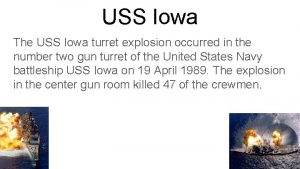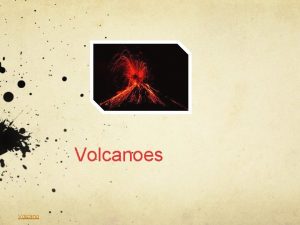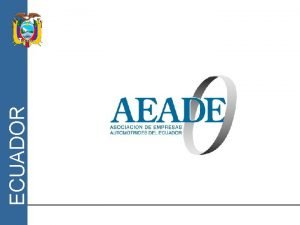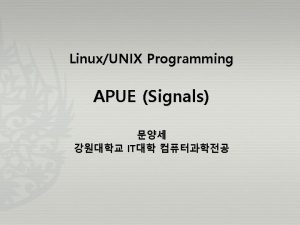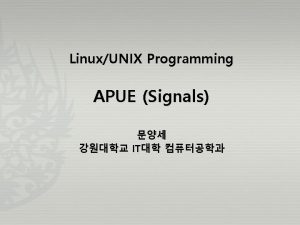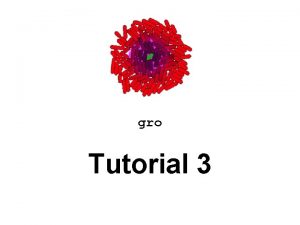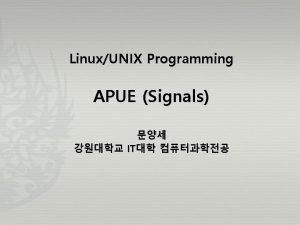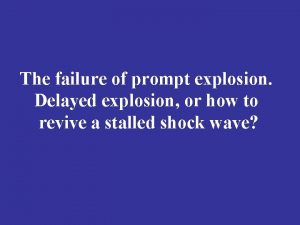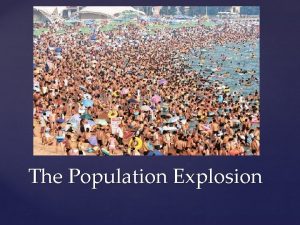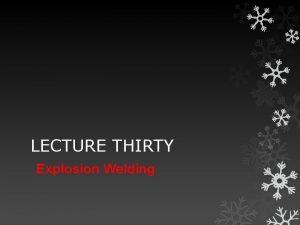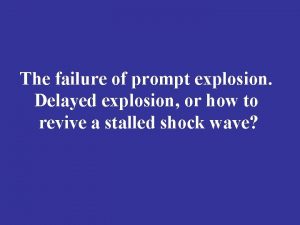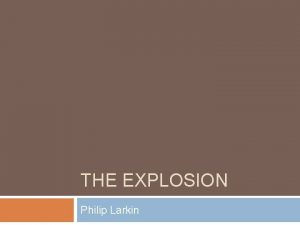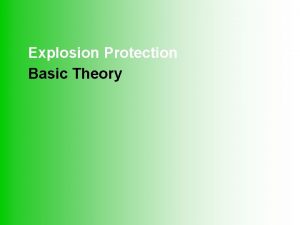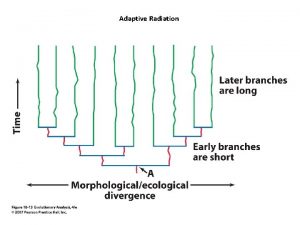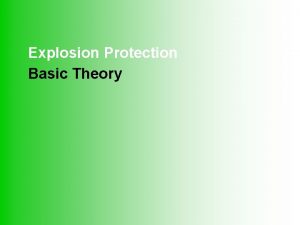Characterization of explosion signals from Tungurahua Volcano Ecuador






















- Slides: 22

Characterization of explosion signals from Tungurahua Volcano, Ecuador David Fee and Milton Garces Infrasound Laboratory Univ. of Hawaii, Manoa dfee@isla. hawaii. edu Robin Matoza Laboratory for Atmospheric Acoustics (L 2 A) Scripps Institution of Oceanography

Overview • Tungurahua Volcano • Array(s) • Explosion Algorithm and Events • Examples – March 2007 Sequence – May 2006 • Explosions Source • Cross-Correlation • Conclusions

Tungurahua Volcano • 5023 m high, 3200 m of relief • Frequent eruptions characterized by pyroclastic flows, lavas, lahars, as well as tephra falls • Over 30, 000 people live in close proximity, evacuated in 1999 • Significant ash ejections resulting from nearly constant tremor and explosions • Motivation: – Understand dynamics and evolution of explosions – Aid general understanding and monitoring Images Courtesy Instituto Geofisico

ASHE Arrays - RIOE • 4 Element Array, ~100 m aperture • Chaparral 2 Microphones • Flat between 0. 1 -200 Hz • Collocated BB seismometer • Porous hoses in open field • Recorded signals from Tungurahua and Sangay Volcanoes 37 km 33° 43 km 132°

Explosion Detection Algorithm • Time period: 2/15/06 -11/1/2007 • High-pass filter data >. 5 Hz • STA/LTA event onset and end time – 2/5 secs, 3/40 secs – Detection must be on all 4 channels • Run PMCC between 0. 5 -4 Hz – 10 bands, 10 sec windows – Families with correct azimuth (± 7°) during event time – Minimum RMS amplitude >0. 02 Pa RMS – Minimum family size >15 pixels

Amplitude and Number Events • 9331 Events detected • >400 per day during peak • Events clumped during periods of high activity • Amplitudes: 0. 018 -24. 4 Pa Mean = 0. 64 Pa 4/1/06 7/1/06 10/1/06 1/1/07 4/1/07 7/1/06 10/1/06 • Durations: 0. 1 -16. 5 s Mean = 3. 95 s

Acoustic Source Energy • EAcoustic=2πr 2/ρc ∫ΔP(t)2 dt r=source-receiver distance ρ=air density • Energy normalized by reference event – Removes geometric spreading and topographical effects – Reference Event: 1. 30 x 107 J C=sound speed ΔP=change in pressure • Assume spherical spreading • More energy more eruptive material?

Energy Release • Energy ratios: 7. 5 x 10 -5 -502 Mean = 0. 81 Largest explosions follow 7/14/06 VEI 3 Eruption 4/1/06 7/1/06 10/1/06 1/1/07 4/1/07 7/1/06 10/1/06 • Group eruptive activity: – – – Background tremor May 06 July 14 -15 th, 2006 August 16 -17 th, 2006 March 07 10/1/06 1/1/07 4/1/07 7/1/06 10/1/

Effective Yield • • Convert Explosion Energies to Effective Yield 1 ton of TNT = 4. 184 GJ Largest explosion=1. 56 ton, most around. 001 ton (~1 kg of TNT) Volcanic explosion in fluid, relationship may not hold 4/1/06 7/1/06 10/1/06 1/1/07 4/1/07 7/1/06 10/1/06

March 2007 Sequence - Example • • Moderate-High Activity resumed between 2/15 -4/15 Significant number of explosions and associated ash Seismic Tremor and LPs returned 2/23/07 Significant number of explosions starting 2/24

February 24 th Event • • 2/24/07 Impulsive Onset Signal lasts ~5 mins Sustained amplitude ~± 1 Pa • Ash >40’ 000 ft • Jetting? Similar spectrum

Acoustic Source Energy Example Explosion: 3/8/07 0745 UTC ~10 Pa at 36. 89 km 368, 900 Pa at 1 m 205 d. B (re 20 μPa)! Effective Yield: 0. 115 ton (105 kg) TNT

March 2007 Explosion Energy • Most energetic explosions during middle of sequence • Cloudy weather hampered visual monitoring for much of sequence • Energy and number of explosions correlate well with heightened volcanic activity

Observation vs. Recording: April 4 th, 2007 • Good recording and viewing conditions. Selected day for eyewitness, satellite, infrasound correlations • Observation: 0450 UTC Explosion. Vibration of windows in Banos (7 km) and heard at observatory (13 km). Clear weather and constant emission reaching 8. 5 km asl (~28, 000 ft) • Infrasound: 2007 -04 -04 04: 51: 03, 2. 91 Pa, 6. 4 sec, 1. 571 energy ratio

Explosions Infrasonic Harmonic Tremor • Mid-May 06: Explosions trigger gliding harmonics lasting up to 30 mins • Very little ash during these explosions/tremor • New Injection of Magma?

Explosions Seismic Harmonic Tremor • Band-limited sustained seismic tremor • Similar frequencies, but harmonics not very apparent (low SNR as well)

Explosion Source • Ruiz et al. 2005: analyzed travel times of seismic and acoustic first arrivals (ΔT =Tacoustic-Tseismic) • Large variations in ΔT source location variability? • Concluded explosions events originate <200 m, followed by outflux of gas, ash, and solid material ~1 s later • May 06 Explosions similar to acoustic recordings from Arenal Volcano, Costa Rica (Garces et al. , 98) • Explosion in low sound speed, low density magma-gas mixture would couple better into the atmosphere acoustic impedance match • Then decompression front propagates into conduit and create resonance • Substantial pressure perturbation could destabilize the melt and initiate flow • Explosion near surface of a gas-rich conduit creates a resonance that transmits into the atmosphere and couples into earth through the conduit walls

Infrared Video 2006/7/31 Explosion ~300 m 0. 1 0 -0. 1 • Somewhat emergent onset, relatively low amplitude • Long duration • Liquid magma ejected

Cross-Correlation • • Pick “master” waveform for subset of events Cross-correlation for each event Look at evolution of correlation value? Parameters: 0. 1 -5 Hz, Window: -3 s, +8 s from onset, amplitude >. 5 Pa Test Master Waveform

Cross-Correlation Results • Subset data between 5/11 -5/16 2006 • 385 Explosions • Waveforms very similar on 5/14 Master

Cross-Correlation – Families • • 37 km away so atmosphere effects may affect waveform similarity Possible solution: compare waveforms with similar atmospheric conditions Use 0. 02 -. 1 Hz as a proxy for wind speed (Fee and Garces, 2007) Sort explosions by waveform similarities (Green and Neuberg, 2006; Umakoshi et al. , 2003) 5/11 Waveform Family 5/14 Waveform Family

Conclusions • Significant number of high s/n explosions recorded from Tungurahua Volcano • Similarities and differences exist: amplitude, duration, energy, correlation, ash content, harmonics • Other data sources necessary to understand effect of explosions – Some ash rich, some ash poor • Understanding explosions key to hazard monitoring and dynamics at Tungurahua • Future Work – Correlate explosions with observed activity: ash, pyroclastic flows, incandescent blocks – Waveform cross-correlation by families: group by correlation and similar atmospheric conditions – Model acoustic/seismic explosion source and determine how it relates to tremor
 Hostal la casa del abuelo
Hostal la casa del abuelo Taal volcano is an example of_______ volcano
Taal volcano is an example of_______ volcano Communicative signals and informative signals
Communicative signals and informative signals What is informative signals
What is informative signals Communicative signals and informative signals
Communicative signals and informative signals Direct characterization examples
Direct characterization examples Direct characterization example
Direct characterization example Mark 48 torpedo explosion
Mark 48 torpedo explosion Minor explosion hazard sign
Minor explosion hazard sign Population explosion industrial revolution
Population explosion industrial revolution Name
Name Population explosion example
Population explosion example Explosion proof electrical junction boxes
Explosion proof electrical junction boxes Bleve mexico city 1984
Bleve mexico city 1984 Factors affecting population explosion
Factors affecting population explosion Cleaver brooks boiler explosion
Cleaver brooks boiler explosion Evangelism explosion outline
Evangelism explosion outline Rwset
Rwset Explosion tredi hombourg
Explosion tredi hombourg Explosion gulf of mexico
Explosion gulf of mexico A 6000 kg railroad car moving at 5m/s
A 6000 kg railroad car moving at 5m/s Tug of war visible thinking
Tug of war visible thinking Iowa turret explosion
Iowa turret explosion
